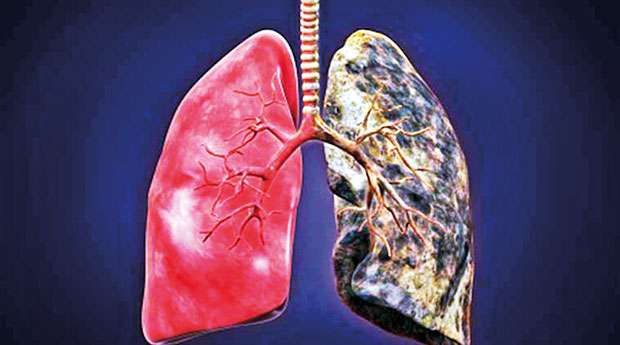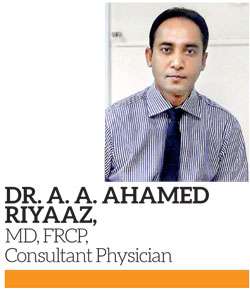Reply To:
Name - Reply Comment

 CANCER, yes, the word sounds heavy just as its real gravity can make a huge impact on an individual.
CANCER, yes, the word sounds heavy just as its real gravity can make a huge impact on an individual.
As far as this term is described, cancer can initiate at almost anywhere in the human body which comprises trillions of cells. In the normal cell division process, human cells grow and divide to create new cells as per the requirement of the body. When these cells grow older or get damaged, they will die spontaneously after which new cells which are efficient and healthier take over. An individual getting affected by cancer results in the break-down of this orderly process where damaged, aged or abnormal cells will keep on multiplying in a bizarre manner, without letting your body replace them with healthy cells, also invading other parts of the body-making the whole system, disturbed. This situation will give rise to a range of consequences with the worst scenario being death.
However, the good news is not all these cancer cells are fatal (malignant) and a considerable ratio will in the process become malignant (pre-malignant). In the event there is early diagnosis and treatment there is hope to eliminate the abnormal cells and get your system back to how it was-functioning.

Every year thousands of people get affected by this so called ‘potential death maker’ which has a capacity to attack various cells of the body thus making the disease fatal. From the effected parts the lungs have topped the list, over-ruling colon, breast and prostate cancers. November is the lung cancer awareness month, so to shed light on this important topic we present excerpts of a discussion we had with Dr. A. A. Ahamed Riyaaz, MD, FRCP, Consultant Physician.
“Lung cancer is a potentially fatal condition which is known to affect 8-10% of individuals over 60 years of age where smokers have a significantly increased susceptibility over non-smokers. smoking takes its place as one of the most important risk factors” says Dr. Riyaaz.
Other major risk factors for this condition include; passive smoking and exposure to substances like radioactive materials, asbestos, nickel, chromium. A positive family history-in fact a first degree relative having a similar malignancy can increase the risk of you developing lung cancer, but the chances are not that high compared to other factors mentioned before.
Types of lung cancer
There are 2 types of lung cancer namely, primary lung cancer and secondary lung cancer.
Primary lung cancer
This arises from cells in the lung and is further described as two common types called small-cell lung carcinoma (SCLC) and non-small-cell lung carcinoma (NSCLC).
NSCLCs include squamous cell cancers-the most common type of lung cancer, adenocarcinoma and large-cell carcinoma. About 1 in 5 cases of lung cancer are SCLC. All these types of lung cancer arise from various cells which line the airways. There are some other rarer types of primary lung cancer which arise from other types of cells in the lung.
Secondary lung cancer
This occurs when cancer cells from somewhere else in the body get metastasized through blood or lymph and lodge in lung tissues.
“Why it is important to identify what exactly the cancer type is because they have characteristic properties which will help us to determine the treatment modality and prognosis.
“For example, small-cell carcinoma grows and spreads (metastasis) rapidly to other parts of your body and by the time this cancer type is diagnosed, it could have spread all over and might be too late for any medical intervention. In contrast, a squamous cell carcinoma tends to grow more slowly and early diagnosis and treatment would make a remission” explains Dr. Riyaaz.
Presentation
“It is extremely important to be vigilant and knowledgeable about the ways a person-affected by lung cancer can present and this is what we as health care professionals are mainly trying to focus during November-the month of lung cancer awareness. Despite this wide range of awareness programmes and educational campaigns people tend to ignore-probable symptoms and avoid seeking medical advice. The commonest scenario we get to see is patients coming with a chest X ray taken for some other reason-which usually shows well-established cancer which is too late to be treated or controlled,” warns Dr Riyaaz.
So having an idea about the ways of the commonest presentation would not only help you, but also people around you to not to miss or ignore what needs serious attention. The earliest symptoms of lung cancer can include one or many of the following; Persistent cough, coughing up blood or bloodstained phlegm (sputum), lethargy, malaise and weight loss, shortness of breath or wheezing - especially if a tumor is growing in a main airway and is partially blocking the airflow.
Hoarse voice
· A change in shape at the end of your fingers (clubbing which is a clinically helpful sign to make the diagnosis)
According to Dr. Riyaaz, if the cancer has progressed and metastasized, it will show the same symptoms in more severity with other complaints like recurrent lung infections (pneumonia) not responding to antibiotics, accumulation of fluid in between the lung and chest wall (pleural effusion), bone pain etc. However all these signs and symptoms can be RED flag signs where you need to seek medical care at the
earliest possible.
Early diagnosis is crucial
“A complete history, thorough physical examination and relevant investigations-most importantly a chest X ray and CT scan will lead the way to an accurate diagnosis. Bronchoscopy will also aid in visualizing the air ways and taking biopsies in order to confirm the diagnosis and all these are crucial in initiating the ideal treatment modality which will be further consolidated depending on the rate of progression, growth, severity and extent of spread”
Treatment
Treatment options for lung cancer which include, surgery, chemotherapy and radiotherapy solely depend on the site of primary tumor in the lung, type of cancer, stage of the cancer (how large the cancer is and whether it has spread) and your general health.
Your doctor will decide the best treatment option for you considering above factors with the main motive being either complete remission, control of further spread or symptomatic relief.
Prevention
“According to latest research studies, 9 out of 10 lung cancer patients are smokers. Nicotine and tobacco in cigarette smoke are pure carcinogens which directly disrupt your lung tissue thus creating a potential place for cancer cells to grow. So quitting smoking is a MUST if you don’t intend to have lung cancer someday in your life and the good news is if you stop smoking for 15 years, the risk of getting a lung cancer reverses to that of a normal person-so it’s never too late to stop.
Furthermore, avoiding risk factors, discussed above is also important and applied in your day to day life as prevention is EXTREMELY better than cure-especially when it comes to cancer” underscored Dr. Riyaaz.
Take home message
“Lung cancer-if diagnosed at an early stage could be treated more efficiently, but more advanced the disease is, lesser the chance of remission. However, treatment at its earliest has a potential in reducing the progression of the disease, so as the general public it is your duty to be concerned about the prevention of lung cancer by avoiding risk factors and spread awareness on common symptoms and the importance of early diagnosis whenever possible because when it comes to any cancer-every second counts” emphasizes Dr. Riyaaz.